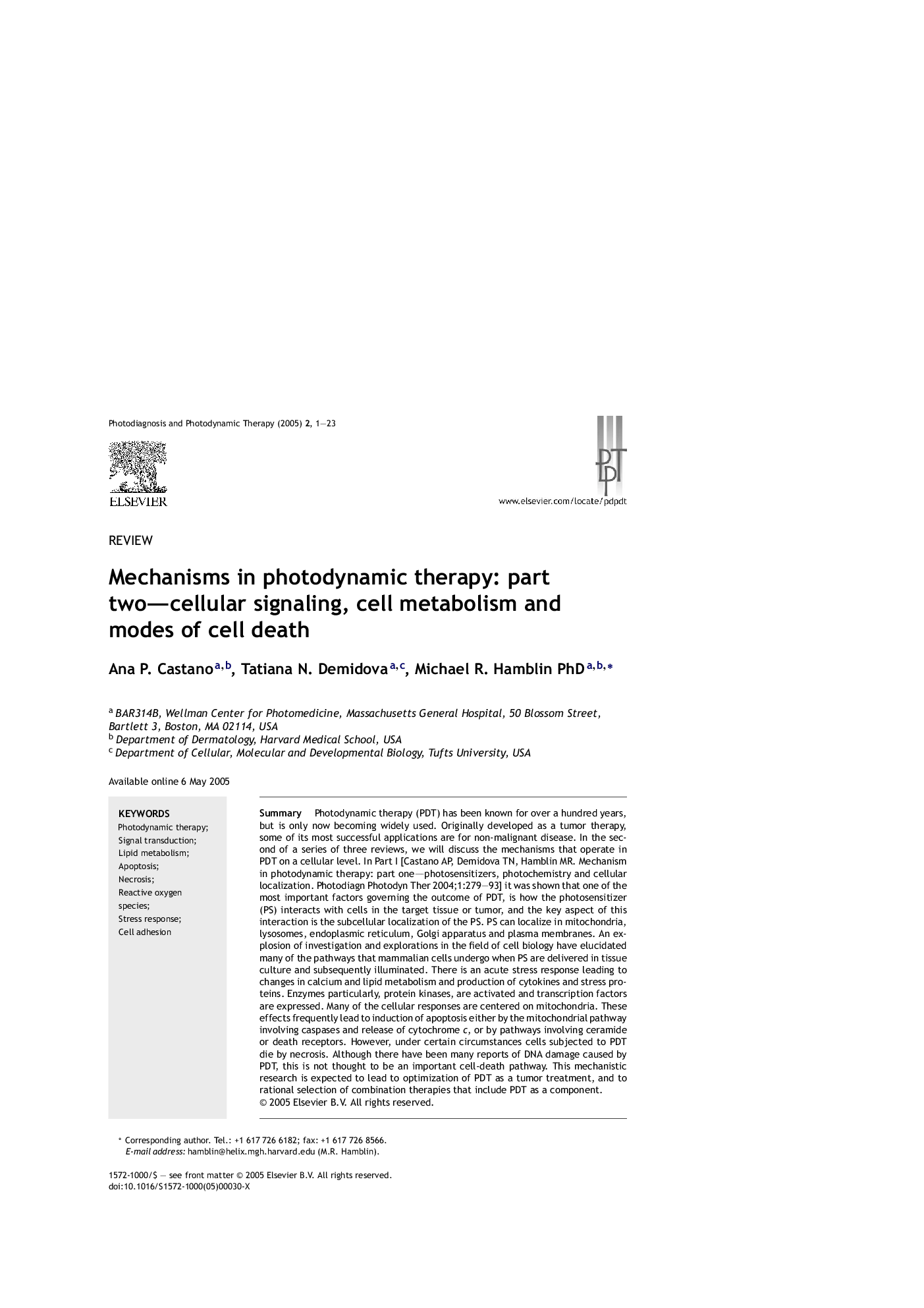| کد مقاله | کد نشریه | سال انتشار | مقاله انگلیسی | نسخه تمام متن |
|---|---|---|---|---|
| 9302386 | 1246384 | 2005 | 23 صفحه PDF | دانلود رایگان |
عنوان انگلیسی مقاله ISI
Mechanisms in photodynamic therapy: part two-cellular signaling, cell metabolism and modes of cell death
دانلود مقاله + سفارش ترجمه
دانلود مقاله ISI انگلیسی
رایگان برای ایرانیان
کلمات کلیدی
موضوعات مرتبط
علوم پزشکی و سلامت
پزشکی و دندانپزشکی
پزشکی و دندانپزشکی (عمومی)
پیش نمایش صفحه اول مقاله

چکیده انگلیسی
Photodynamic therapy (PDT) has been known for over a hundred years, but is only now becoming widely used. Originally developed as a tumor therapy, some of its most successful applications are for non-malignant disease. In the second of a series of three reviews, we will discuss the mechanisms that operate in PDT on a cellular level. In Part I [Castano AP, Demidova TN, Hamblin MR. Mechanism in photodynamic therapy: part one-photosensitizers, photochemistry and cellular localization. Photodiagn Photodyn Ther 2004;1:279-93] it was shown that one of the most important factors governing the outcome of PDT, is how the photosensitizer (PS) interacts with cells in the target tissue or tumor, and the key aspect of this interaction is the subcellular localization of the PS. PS can localize in mitochondria, lysosomes, endoplasmic reticulum, Golgi apparatus and plasma membranes. An explosion of investigation and explorations in the field of cell biology have elucidated many of the pathways that mammalian cells undergo when PS are delivered in tissue culture and subsequently illuminated. There is an acute stress response leading to changes in calcium and lipid metabolism and production of cytokines and stress proteins. Enzymes particularly, protein kinases, are activated and transcription factors are expressed. Many of the cellular responses are centered on mitochondria. These effects frequently lead to induction of apoptosis either by the mitochondrial pathway involving caspases and release of cytochrome c, or by pathways involving ceramide or death receptors. However, under certain circumstances cells subjected to PDT die by necrosis. Although there have been many reports of DNA damage caused by PDT, this is not thought to be an important cell-death pathway. This mechanistic research is expected to lead to optimization of PDT as a tumor treatment, and to rational selection of combination therapies that include PDT as a component.
ناشر
Database: Elsevier - ScienceDirect (ساینس دایرکت)
Journal: Photodiagnosis and Photodynamic Therapy - Volume 2, Issue 1, March 2005, Pages 1-23
Journal: Photodiagnosis and Photodynamic Therapy - Volume 2, Issue 1, March 2005, Pages 1-23
نویسندگان
Ana P. Castano, Tatiana N. Demidova, Michael R. PhD,